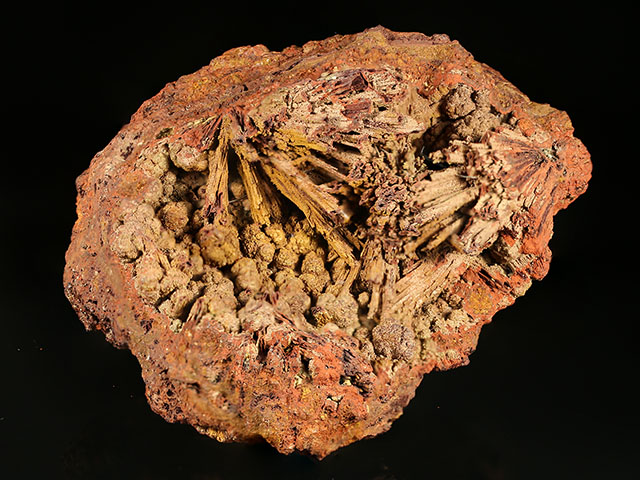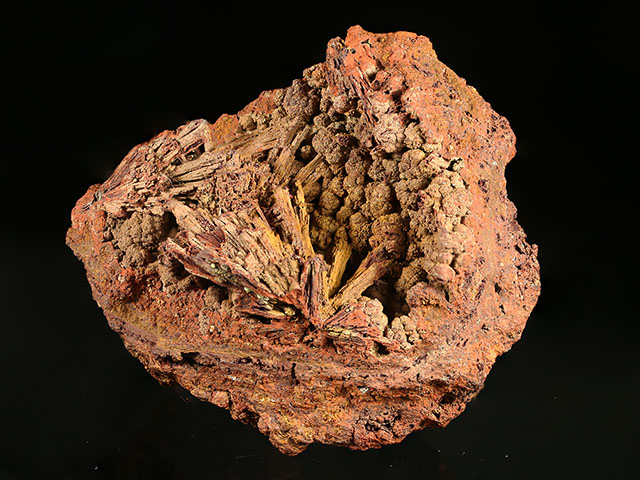Home > Pseudomorphs – March 3 > MS1519 Goethite after Parasymplesite
Goethite after Parasymplesite - Sold
- Ojuela mine
- Mapimí
- Durango
- Mexico
- 7.6 by 6.7 by 4.1 cm – Small cabinet specimen (under 10 cm)
Goethite is an iron oxide hydroxide, named after German poet and philosopher Johann Wolfgang von Goethe (1749-1832). Johann Georg Lenz (1748-1832) first proposed the mineral name in his 1806 Tabellen über das gesammte Mineralreich. Parasymplesite is a ferrous iron arsenate, named after its polymorphic relationship with the long known species symplesite (Ito et al., 1954).
This consists of iron oxide matrix, often called limonite, mainly consisting of goethite. Two sprays of bladed crystals to 2.5 cm sit on a concave surface. As the crystals have changed to goethite, and since the matrix is primarilly goethite, this specimen offers no color contrast. Crystal habit alone visually separates the pseudomorphs from their matrix. While others samples of similar habit from Ojuela carry the designation köttigite, it is more likely that an iron rich species (parasymplesite) formed orginally, rather than a zinc rich species. This specimen shows no significant evidence of zinc mineralization. Imagine the fabulous parasymplesite specimen this was before the water table dropped, permitting its oxidation.


